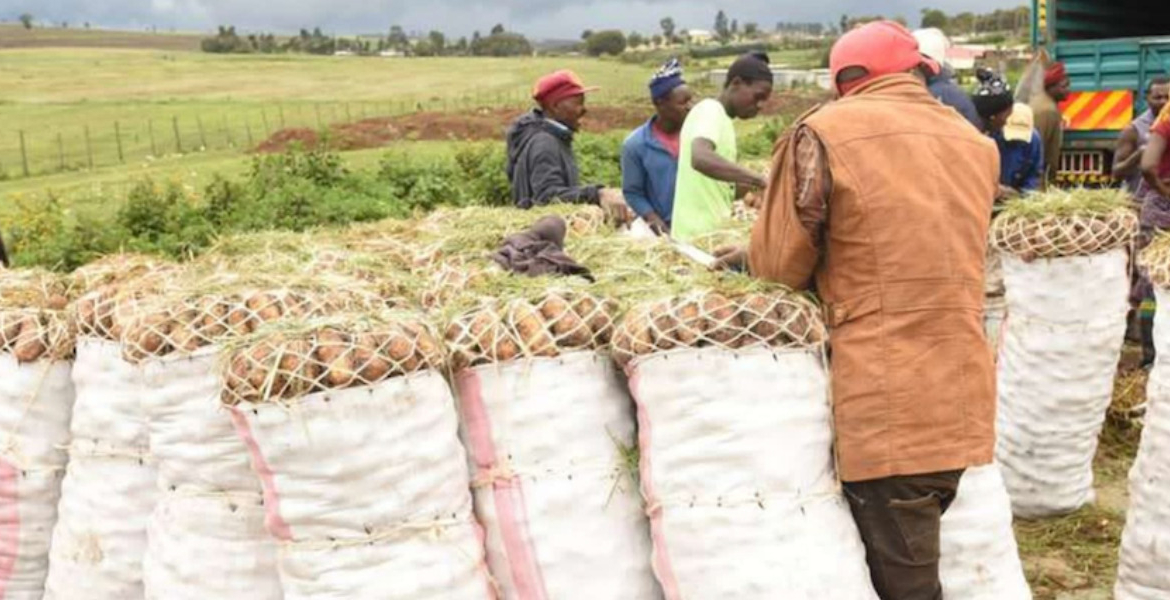Nyandarua Potatoes Among Most Contaminated, Study Finds

A new study by Egerton University has raised significant food safety concerns in Kenya, revealing widespread pesticide contamination in potatoes, a staple food consumed across all socioeconomic levels.
The study, which assessed the impact of various cooking methods on pesticide residue levels, found that while boiling and frying can effectively reduce contamination, other methods, such as baking and roasting, are less successful. Alarmingly, the research confirmed the presence of pesticides, some of which are banned or heavily restricted in the European Union due to their long-term health hazards.
From the bustling streets of Nairobi's Mukuru Kwa Njenga slum, where Zipporah Atieno serves affordable fried potato chips to construction workers and schoolchildren, to the upscale estates of Karen, where potatoes are prepared in gourmet dishes, the potato is a ubiquitous component of Kenyan cuisine. It is the affordability of street vendor offerings of fried potatoes and githeri that attracts the low-income population.
Yet, the Egerton University study suggests that regardless of the cooking style or the consumer’s economic status, the threat of pesticide contamination looms. These findings corroborate an earlier report by the Kenya Plant Health Inspectorate Service (KEPHIS), which found that 46% of sampled fresh produce contained detectable pesticides, with 11% exceeding the maximum residue levels permitted in the European Union.
Potatoes are a critical component of Kenya's agricultural economy, contributing nearly Sh50 billion annually and supporting the livelihoods of 2.5 million people. According to industry statistics, the country produces approximately 2.8 million tons of potatoes annually, but demand exceeds 3.1 million tons. This supply-demand gap has driven farmers to adopt more intensive production methods, including the increased use of synthetic pesticides.
The growing urban population and shifting dietary habits have fueled a surge in potato consumption, doubling from 35 kilograms per person in 2019 to 63 kilograms in 2021. This increase has spurred the expansion of potato farming in key regions, including Nyandarua, Bomet, Meru, Nakuru, Uasin Gishu, Narok, and Nyeri. The ‘Shangi’ variety remains the most popular due to its high yield, fast maturity, and suitability for cooking.
The Egerton University study provides an in-depth look at pesticide application practices, based on interviews with 275 farmers and laboratory analysis of 16 raw potato samples. The research found that 98% of the surveyed farmers reported using pesticides, with fungicides being the most commonly applied chemicals, used by 96.4% of farmers to combat fungal infections such as late blight. The study revealed that synthetic fungicides are indispensable for virtually all Kenyan potato farmers. Common compounds include Mancozeb and Metalaxyl, which dominate the market due to their availability and perceived effectiveness.
However, the study exposes a concerning trend: only 25% of the potato farmers in Kenya adhere to recommended guidelines for pesticide application as per the manufacturers’ instructions. Instead, a significant 75% relies on advice from agrochemical retailers, while 13% relies on guidance from fellow farmers. This results in excessive pesticide use, increasing the likelihood of harmful residue accumulation. Moreover, farmers commonly mixed pesticides in an attempt to create more potent formulations, a practice that can result in dangerously high concentrations of chemicals in the crops, as well as increasing toxicity or diminishing efficacy.
The study highlights the alarming presence of unsafe pesticide levels in potatoes produced in Nyandarua County, a major potato-growing region. A notable correlation was found between adherence to manufacturer instructions and pesticide residue levels. Farmers following these guidelines recorded significantly lower residue levels, while those who disregarded them exhibited dangerously high concentrations. The situation is likely to worsen as climate change exacerbates the spread of crop diseases, placing additional pressure on farmers to protect their harvests through increased pesticide application.








Add new comment